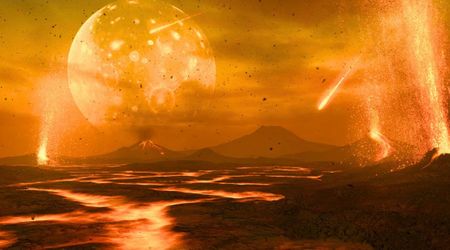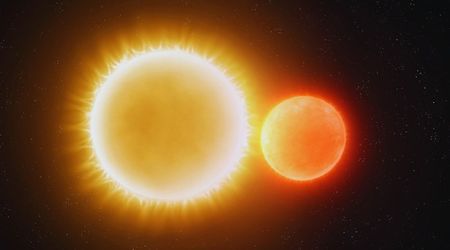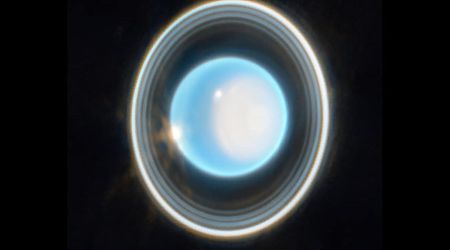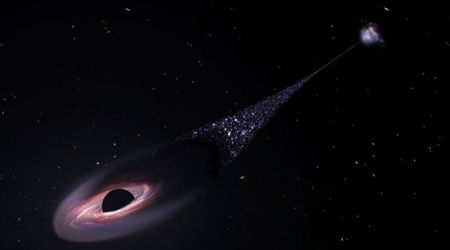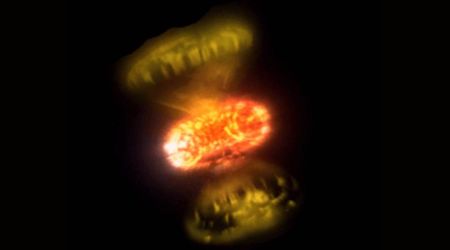NASA's Roman Telescope to probe dark matter using Einstein's gravitational lensing

NASA's Nancy Grace Roman Space Telescope, set to begin operations in 2027, will employ a phenomenon called "gravitational lensing," predicted by Albert Einstein over a century ago, to investigate the enduring mystery of dark matter. A key part of Einstein's theory of general relativity, the term describes how massive objects warp the fabric of time and space, causing light from distant sources to bend as it passes these cosmic distortions, as reported by Space.com.
We wish a happy 100th birthday to the late Dr. Nancy Grace Roman, the namesake of @NASA’s next flagship astrophysics mission, which is on track to launch by May 2027.
— Nancy Grace Roman Space Telescope (@NASARoman) May 16, 2025
Dr. Roman's passion and dedication drove the development of telescopes like @NASAHubble, @NASAWebb, and now… pic.twitter.com/jN5yazgCL6
A recent study indicates that the Roman Telescope's extensive cosmic surveys could hold approximately 160,000 gravitational lenses. Researchers estimate that about 500 of these lenses will offer prime opportunities to study "dark matter" — the enigmatic substance believed to constitute a significant portion of the universe's mass. "Ultimately, the question we’re trying to address is: What particle or particles constitute dark matter?" posited Tansu Daylan, principal investigator for the research team and a faculty fellow at the McDonnell Center for the Space Sciences at Washington University in St. Louis. "While some properties of dark matter are known, we essentially have no idea what makes up dark matter." Daylan emphasized that the Roman Telescope will be crucial in distinguishing "how dark matter is distributed on small scales and, hence, its particle nature."
Dark matter is one of the biggest mysteries in the universe.
— Nancy Grace Roman Space Telescope (@NASARoman) June 13, 2025
Roman will shed light on the cosmic enigma using hundreds of natural telescopes –– foreground galaxies that magnify light from farther galaxies.
https://t.co/p4kRi1qUNw pic.twitter.com/r0IPWsh1F4
The elusive nature of dark matter poses a significant challenge for scientists. Despite comprising approximately 85% of the universe's matter, its composition remains largely unknown. This enigma stems from dark matter's inability to interact with light or other forms of electromagnetic radiation. Consequently, dark matter is not only invisible but also cannot be made of familiar particles such as electrons, protons, and neutrons, which form the atoms of all observable matter, including stars, planets, and moons.
This lack of interaction with electromagnetic radiation, one of the universe's four fundamental forces, has driven scientists to look beyond the Standard Model of particle physics in their quest for new particles that could explain dark matter. So, how can dark matter bend if it doesn't interact with it? The answer lies with gravity, another of the universe's fundamental forces. General relativity dictates that all objects with mass, including dark matter, warp the space-time relation to some degree. Light is then compelled to follow this curvature. This is precisely how dark matter factors intp gravitational lensing.
Dark matter is one of the biggest mysteries in the universe.
— Nancy Grace Roman Space Telescope (@NASARoman) June 13, 2025
Roman will shed light on the cosmic enigma using hundreds of natural telescopes –– foreground galaxies that magnify light from farther galaxies.
https://t.co/p4kRi1qUNw pic.twitter.com/r0IPWsh1F4
Each image generated by Roman will be approximately 200 times larger than those from the Hubble Space Telescope, a key factor in its ability to uncover a vast number of new gravitational lenses. However, the telescope's contribution goes beyond mere quantity; the new study highlights the quality of these Roman-discovered lenses as well. "Roman will not only significantly increase our sample size [of gravitational lenses] — its sharp, high-resolution images will also allow us to discover gravitational lenses that appear smaller on the sky," Daylan explained to the outlet.

He added that both the alignment and brightness of background galaxies must meet specific criteria "so we can characterize the dark matter within the foreground galaxies." Roman's Wide Field instrument, a 300-megapixel camera, will enable researchers to measure the bending of light from background galaxies with incredible precision. This sensitivity is so high that it's comparable to gauging the diameter of a single human cell from over two American soccer pitches away.
